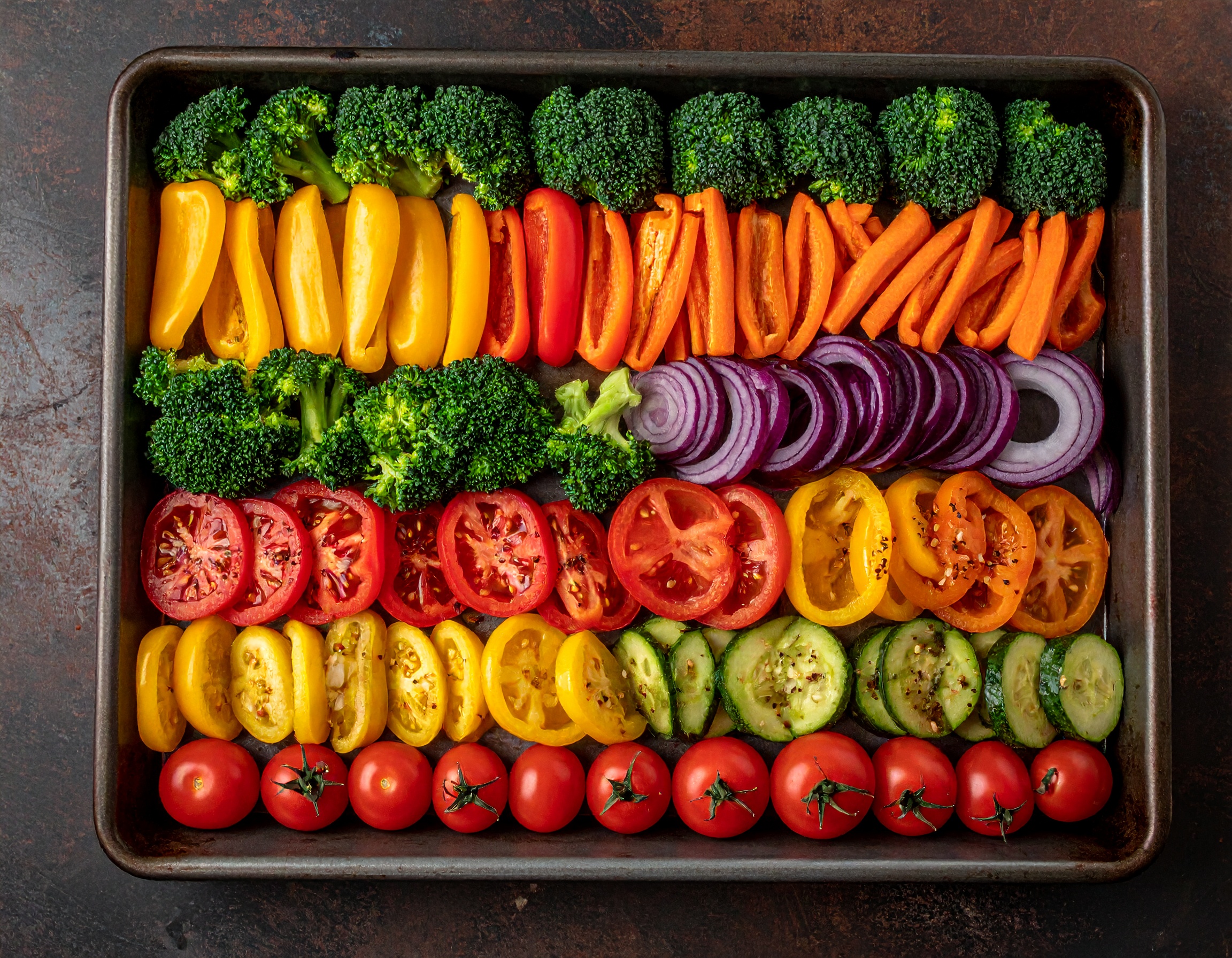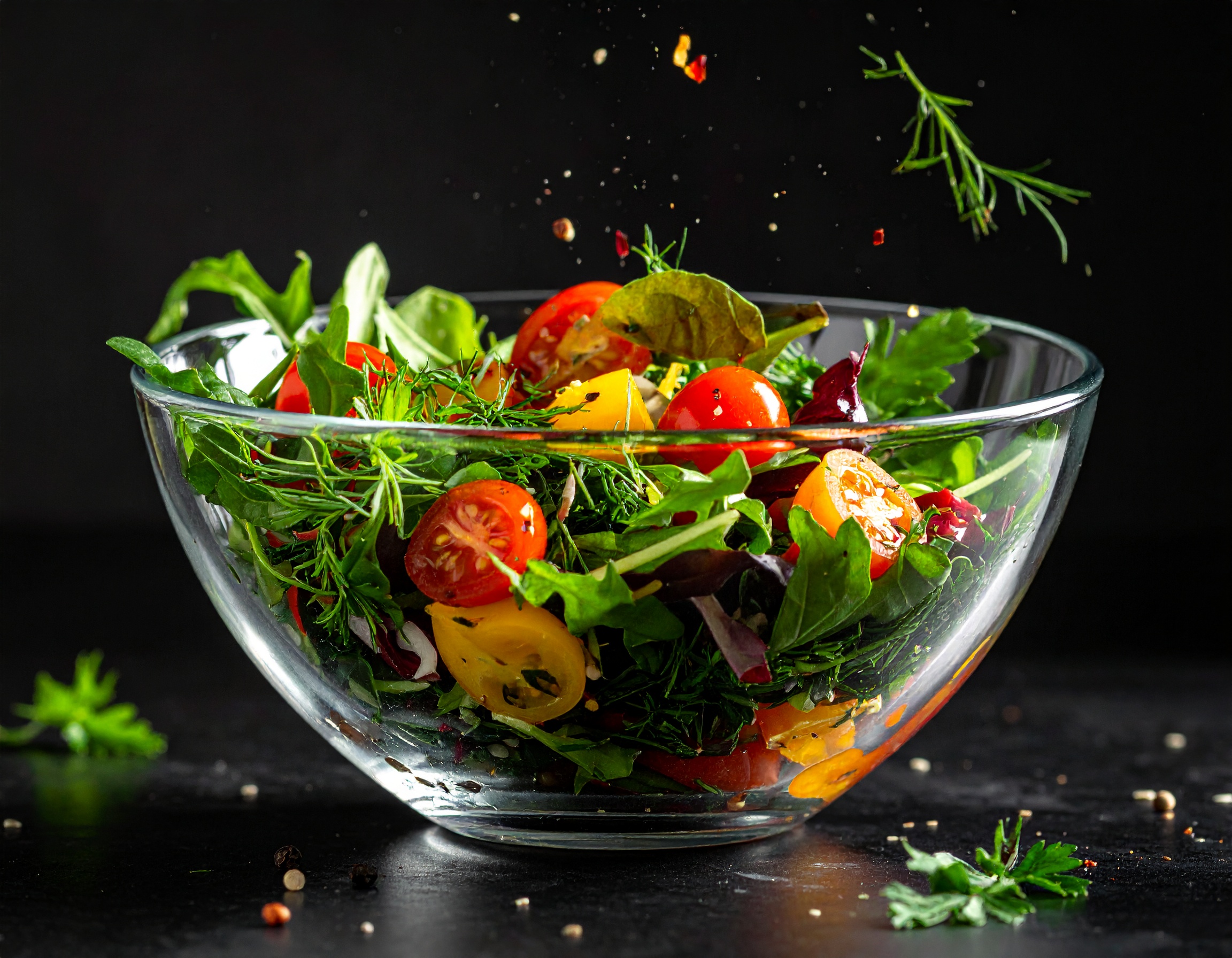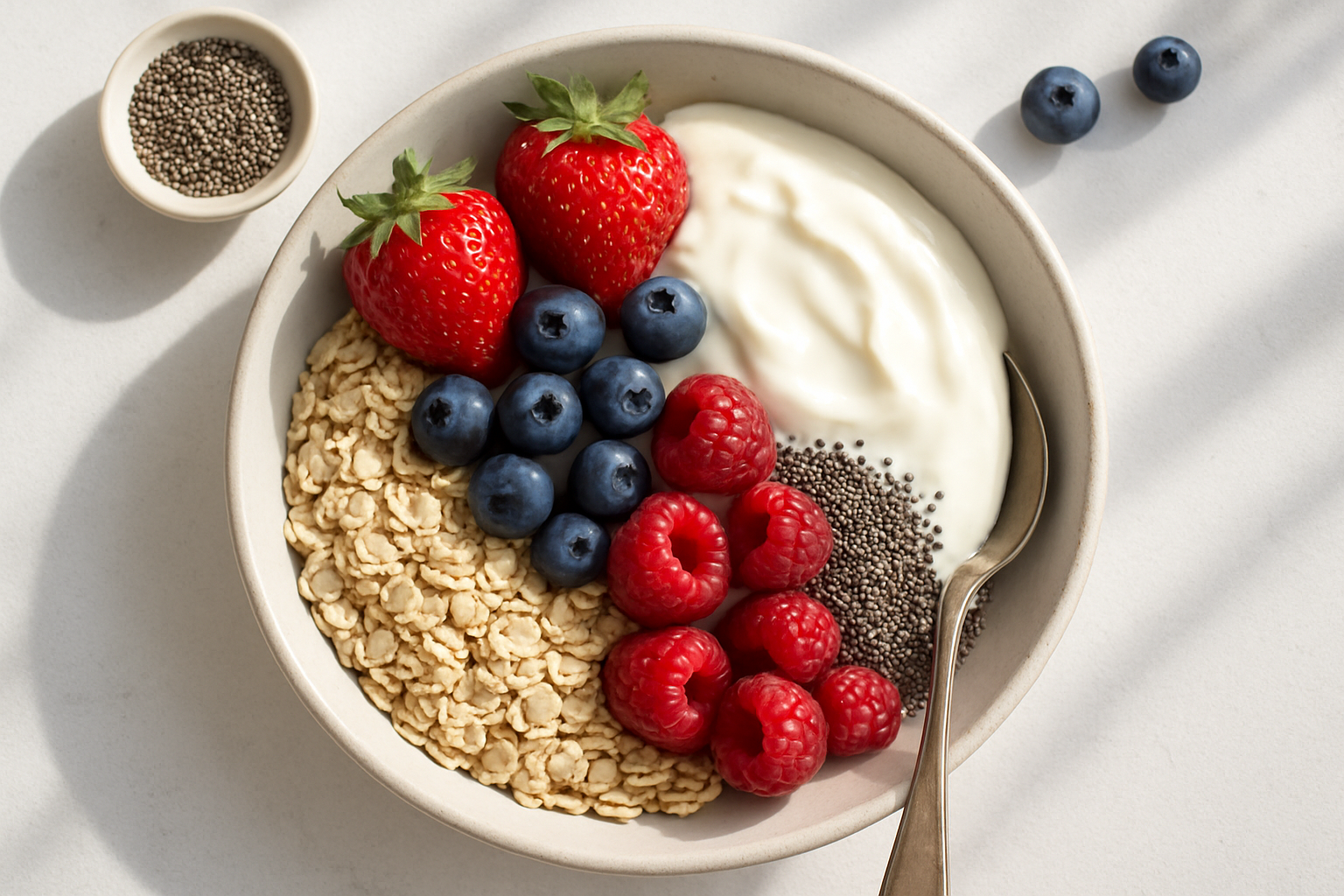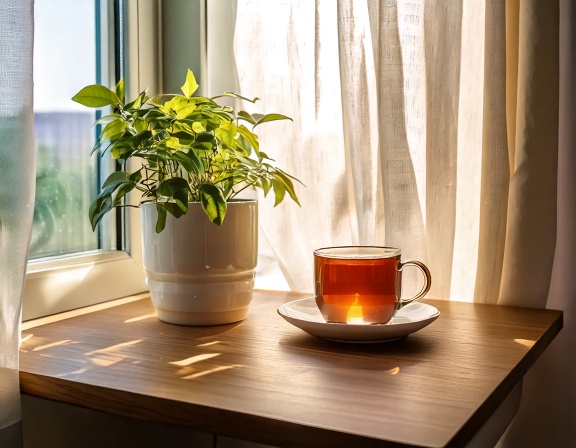Color On The Plate, Color In The Day
Color is more than decoration. It marks freshness, signals variety, and changes how we feel about a meal before the first bite. That first impression can shape the rest of the day by nudging attention toward energy and care rather than speed and distraction.
Why color moves us
Humans read color quickly. A bright plate suggests variety and invites curiosity. When meals look inviting, we tend to slow down enough to taste and to notice the people at the table. That attention becomes part of why the meal satisfies beyond calories and macros.
Where to begin
Pick two colors per meal and let them lead. Red berries with yogurt. Green herbs on eggs. Orange carrots with chickpeas. This is not about rules or perfection. It is an invitation to notice what is already available.

Make it visible
Keep a small bowl of fruit on the counter where you will see it. Place cut vegetables at eye level in the fridge. When the raw materials are visible, the brain treats them as options and not as chores. Add herbs or citrus at the end of cooking to refresh color and aroma.
The ripple effect
A meal that looks alive often pulls the next choice in the same direction. The opposite also holds; gray meals invite gray energy. When you build color on the plate, you build a small story of care. That story tends to carry forward into the next hour of your day.

A practical note
Variety supports nutrition, but the point of color here is inspiration. Let it be playful. If a meal is beige, add one vivid element and call it done. If your week is busy, choose one color theme and repeat it. Brightness in one place can brighten others.


















